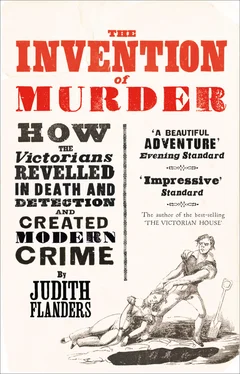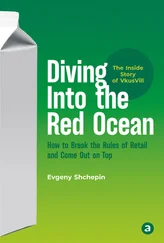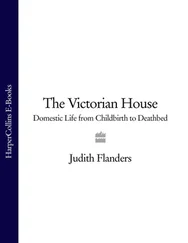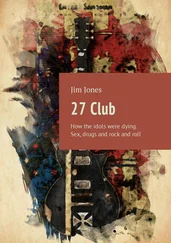Two years after these theatre adaptations, the young novelist Harrison Ainsworth published Rookwood, which was very much the love child of Eugene Aram and Paul Clifford crossed with gothic tales, and this led the way to a new kind of fictional criminal-hero. Ainsworth was not concerned, as Bulwer claimed to be, with examining the motivation of criminals, and society’s responsibilities. He was not even terribly concerned with facts: it was in Rookwood that Dick Turpin first made his epic ride from London to York on Black Bess, although the historical Turpin had only ridden as far as Lincolnshire – a sixty-mile trip instead of two hundred. Ainsworth wanted to entertain, and his highwaymen are debonair and dashing, usually men of rank cheated out of their birthrights. As Ainsworth’s Turpin says, ‘It is as necessary for a man to be a gentleman before he can turn highwayman, as it is for a doctor to have his diploma, or an attorney his certificate.’
Turpin, hanged in 1739 for horse-stealing, had from about 1800 been turned into popular entertainment in coarse and inexpensive chapbooks, and in 1818 in an onstage incarnation, as Richard Turpin, The Highwayman. By 1823 his name was already a byword for a dashing, brave criminal. Thurtell had boasted to his brother, ‘We are Turpin-like lads, and have done the trick.’ From the 1830s penny-bloods returned again and again to his story. One of the most popular was Black Bess; or, The Knight of the Road, which appeared in 254 numbers over five years: Turpin was not executed until page 2,207. Dick Turpin, Jack Sheppard, Eugene Aram and others made up the subjects for series like Purkess’s Library of Romance and Purkess’s Penny Plays. These publications were so popular, the police complained, that vagrant boys spent their leisure time playing cards and dominoes and reading Jack Sheppard and Oliver Twist ‘and publications of that kind’, the implication being that this reading material would in and of itself lead to crime.
Rookwood was filled with songs – twenty-three in the first edition, and more later. Ainsworth may have been thinking of theatrical adaptations from the first: they certainly followed quickly, and nearly every one of them included the song he had written in ‘flash’, or thieves’ slang, which ‘travelled everywhere. It deafened us in the streets, where it was. popular with the organ-grinders and German bands … it was whistled by every dirty guttersnipe, and chanted in drawing-rooms by fair lips.’
In the box of the Stone Jug [prison] I was born
Of a hempen widow [my father was hanged] the kid forlorn.
Fake away [Go on, steal].
My noble father as I’ve heard say
Was a famous merchant of capers gay.
Nix my dolly, palls [Nothing, friends], fake away.
The knucks in quod [thieves in prison] did my school-men play
And put me up to the time of day.
Fake away.
No dummy hunter had forks so fly [pickpocket had fingers so nimble]
No knuckler so deftly could fake a cly [pick a pocket]
Nix my dolly, palls, fake away.
But my nuttiest lady one fine day
To the beaks did her gentleman betray.
Fake away.
And thus was I bowled out at last,
And into the Jug for a lag was cast [and was sent to prison].
Nix my dolly, palls, fake away.
But I slipp’d my darbies [fetters] one morn in May
And gave to the dubsman [turnkey] a holiday.
Fake away.
And here I am, palls, merry and free,
A regular rollocking Romany.
Nix my dolly, palls, fake away.
In 1835 Rookwood was adapted for Astley’s Amphitheatre, which specialized in staging hippodramas – spectaculars with vast numbers of horses, riders and extras. It was retitled Turpin’s Ride to York and the Death of Black Bess, taking the element that people had enjoyed the most. (It is notable, two years after Cold Bath Field, that Black Bess no longer dies of exhaustion after her epic journey, but is shot by the wicked Bow Street Runners.)
The success of Rookwood, both onstage and as fiction, led to even more novels in which criminals were glamorized, with Ainsworth’s next book revolving entirely around a historical criminal: the eighteenth-century thief and gaol-breaker Jack Sheppard. Serialization began in Bentley’s Miscellany just as another story in that magazine, also about a boy-criminal, also illustrated by Cruikshank, was ending, and for four episodes they overlapped, so it was natural to think of them together. The second tale was Oliver Twist, by Charles Dickens. Today it is surprising to think of Oliver Twist as a crime novel, but stripped down to its bare bones, the plot is very similar to Bulwer’s Paul Clifford: the orphan who is, unknown to himself, from a ‘good’ family but is left to be raised by criminals. Similarly, Ainsworth’s Jack Sheppard is the story of an apprentice who becomes a thief, with a parallel story of a good apprentice cheated out of his inheritance by an evil relative; Oliver Twist is an apprentice who has ostensibly gone bad by joining Fagin’s gang, while he is unlawfully kept from his inheritance by his evil half-brother. (The name ‘Twist’ in the title would also have tipped off contemporary readers that this was a book about crime and criminals: ‘to twist’ was underworld slang for ‘to hang’.) *These books were classed together as ‘Newgate novels’, connecting the stories both to the Newgate Calendar and also to the gaol from which Sheppard himself so famously escaped.
Some critics left Dickens out of their discussions of Newgate novels, which were condemned for portraying criminals sympathetically. As the Edinburgh Review summed up, Dickens ‘never endeavours to mislead our sympathies – to pervert plain notions of right and wrong – to make vice interesting in our eyes. We find no. creatures blending with their crimes the most incongruous and romantic virtues.’ This praise of Dickens was, very obviously, also a poke at Bulwer. Punch magazine, too, condemned Newgate fiction in its drawing of ‘The Literary Gentleman’ surrounded by thoughts of ‘Murder’, ‘Gallows heroism’, ‘Burglary’ and ‘Robbery’. On his desk is a dagger, a gallows, a broadside printed with a ‘Dying Speech’, a copy of the Newgate Calendar and another of the Annals of Crime. The verse that follows mocks:
… you, great scribe, more greedy of renown,
From Hounslow’s gibbet drag a hero down.
Embue his mind with virtue; make him quote
Some moral truth, before he cuts a throat. *
Bulwer was a punchbag for everyone. For now Eugene Aram’s name – even without reference to Bulwer – was being used for anything, even a toothache cure. This advertisement appeared regularly in both the London and the provincial papers, making a segue from a murderer to a patent medicine seem bizarrely normal:
EUGENE ARAM. – It will be in the recollection of most of our readers that after the murder of Daniel Clarke, Eugene Aram resided many years at Lynn, in Norfolk, in fancied security and seclusion. – Sweeting’s Tooth Ache Elixir has also found its way to the same place. In the advertisement in another part of this paper respecting this deservingly popular medicine, will be found a letter from the agent at Lynn, from which we may conclude that while it is giving peace and ease from pain to many, yet (like Eugene Aram), it will not be allowed any rest for itself.
To dissociate himself from this type of thing, in 1840 Bulwer produced a second edition of Eugene Aram, with numerous changes, blandly assuring his readers that ‘the legal evidence against [Aram] is very deficient’. The most important alteration was that Aram was no longer a murderer, but had simply fretted himself to a shadow for fourteen years over a murder committed by another man, Bulwer’s response to the fear that, as with Thurtell and Turpin, Newgate novels would lead the young to emulate their heroes. This was of even more concern with stage versions, which had larger audiences than the printed word. Oliver Twist’s huge popularity – there were six stage adaptations in London even before the end of the book was serialized, and the Surrey alone claimed that 300,000 people had seen its production in its first year – meant that most people’s ideas of the story were based not on the novel, but on stage versions speedily mounted in small theatres. From 1839 to 1859 there were at least sixteen productions of Jack Sheppard, *and a dozen of Oliver Twist. Eugene Aram was not particularly popular in London, but was a perennial favourite outside the capital: at least thirty productions appeared in those two decades. Plays that were performed by fairground companies, fit-up companies and booth theatres (travelling companies that carried their own stages with them) have little recorded history, but they were what most people saw. Today we can only record their existence from rare survivals (like the Maria Marten marionettes), or from moments when the theatre companies met the authorities, as when in 1857 the Leeds Mercury reported that in Great Horton, outside Bradford, the owner of a booth theatre had been charged with performing Eugene Aram without a licence.
Читать дальше












